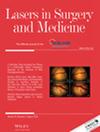Association Between Acquired Bilateral Nevus of Ota-Like Macules Patients' Clinical Characteristics and Melasma Induction/Exacerbation After Q-Switched Laser: A Decadal Comparative Study of 2675 Chinese Women in Two Different Periods
Abstract
Background
Post-laser melasma induction/exacerbation remains a critical challenge in treating acquired bilateral nevus of Ota-like macules (ABNOMs). While laser parameters are well-studied, patient-specific risk factors across evolving therapeutic eras require elucidation.
Methods
This retrospective cohort analyzed 2675 ABNOMs patients treated with Q-switched lasers in two eras: C1 (2010–2013; 1064 nm-only, n = 1069) and C2 (2020–2023; multi-wavelength, n = 1606). Risk factors were assessed through multivariate logistic regression, incorporating laser wavelength stratification.
Results
Era-specific risk reversals emerged: In C1, age > 25, Fitzpatrick IV and patch lesions predicted melasma induction, whereas large/dark lesions showed protective effects. C2 showed inverse risks for lesion characteristics (large/dark lesions showed negative effects), with skin type/age becoming nonsignificant. Despite increased number of patients with pre-existing melasma in C2, melasma exacerbation rates decreased from 87.6% (C1) to 50.1% (C2, p < 0.05) in parallel with diagnostic advances (subclinical melasma detection) and protocol optimization. Wavelength-specific analysis revealed a persistent Fitzpatrick IV risk with 1064 nm versus lesion-driven risks with 694/755 nm. Paradoxically, treatment of dark lesions with 1064 nm reduced the risk of melasma exacerbation, probably through selective melanin targeting.
Conclusion
ABNOMs-related melasma risks dynamically evolve with diagnostic/therapeutic advancements, demanding phenotype-specific laser parameter selection. This decade-spanning analysis provides actionable insights for optimizing laser therapy in diverse ABNOMs populations, despite inherent retrospective limitations.
Clinical Trial Registration
Registry and the Registration No. of the study/trial: ChiCTR2500095697.

 求助内容:
求助内容: 应助结果提醒方式:
应助结果提醒方式:


